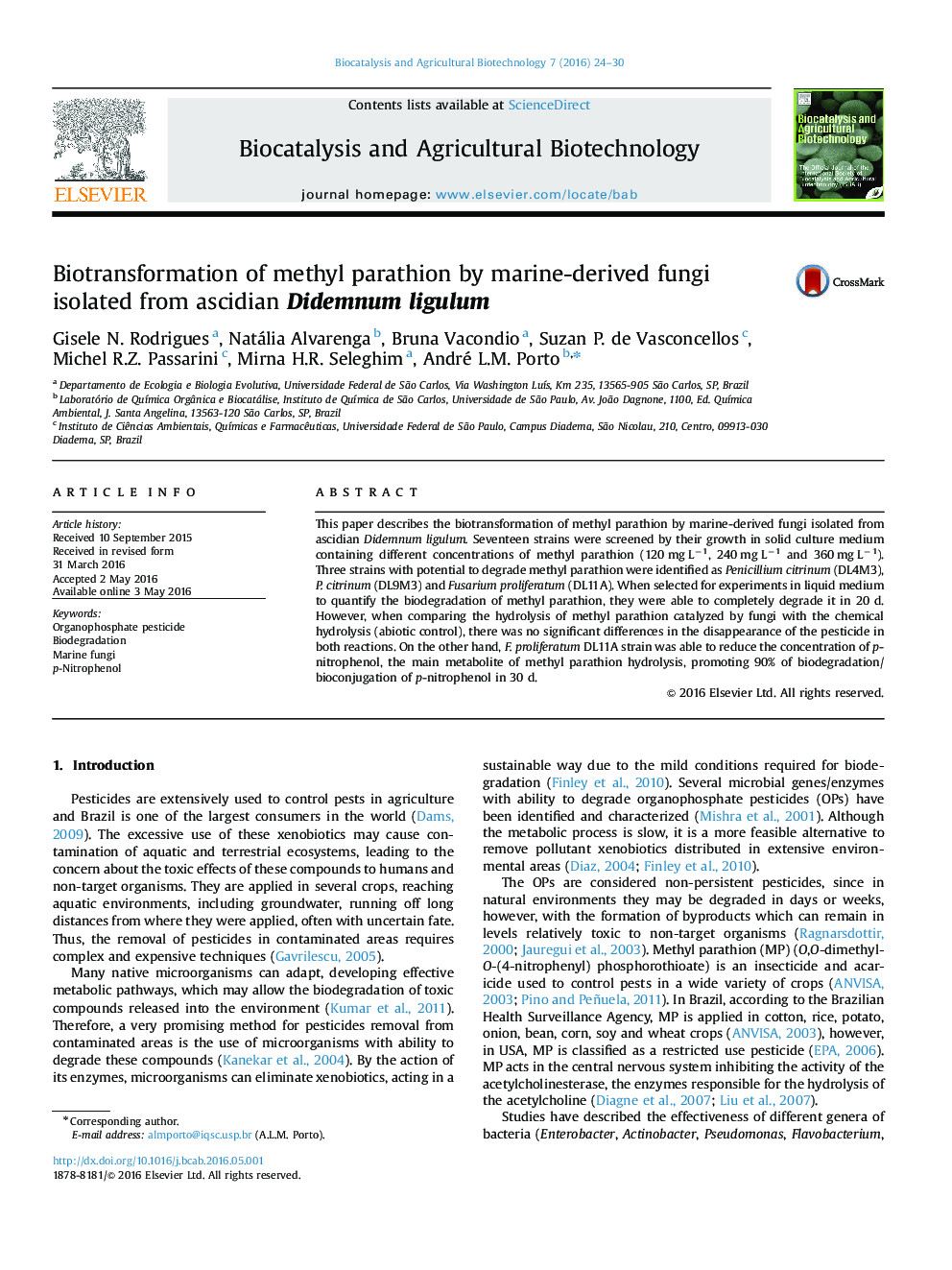| Article ID | Journal | Published Year | Pages | File Type |
|---|---|---|---|---|
| 2075612 | Biocatalysis and Agricultural Biotechnology | 2016 | 7 Pages |
This paper describes the biotransformation of methyl parathion by marine-derived fungi isolated from ascidian Didemnum ligulum. Seventeen strains were screened by their growth in solid culture medium containing different concentrations of methyl parathion (120 mg L−1, 240 mg L−1 and 360 mg L−1). Three strains with potential to degrade methyl parathion were identified as Penicillium citrinum (DL4M3), P. citrinum (DL9M3) and Fusarium proliferatum (DL11A). When selected for experiments in liquid medium to quantify the biodegradation of methyl parathion, they were able to completely degrade it in 20 d. However, when comparing the hydrolysis of methyl parathion catalyzed by fungi with the chemical hydrolysis (abiotic control), there was no significant differences in the disappearance of the pesticide in both reactions. On the other hand, F. proliferatum DL11A strain was able to reduce the concentration of p-nitrophenol, the main metabolite of methyl parathion hydrolysis, promoting 90% of biodegradation/bioconjugation of p-nitrophenol in 30 d.
